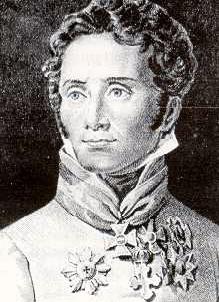Battle of Mâcon (1814) facts for kids
Quick facts for kids Battle of Mâcon (1814) |
|||||||
|---|---|---|---|---|---|---|---|
| Part of the War of the Sixth Coalition | |||||||
 Vinzenz Ferrerius Friedrich Freiherr von Bianchi |
|||||||
|
|||||||
| Belligerents | |||||||
| Commanders and leaders | |||||||
| Strength | |||||||
| 5,000-6,000 | 8,000–14,740 | ||||||
| Casualties and losses | |||||||
| 683–1,300 killed, wounded, or captured 2 guns lost |
881–900 killed, wounded, or captured | ||||||
The Battle of Mâcon took place on March 11, 1814. It was a fight between French soldiers and Austrian soldiers. The French army was led by General Louis François Félix Musnier. The Austrian army was led by General Frederick Bianchi. This battle was part of a bigger conflict called the War of the Sixth Coalition. The city of Mâcon is located about 72 kilometers (45 miles) north of Lyon in France. The Austrians won this battle.
Why the Battle of Mâcon Happened
In 1814, a huge war was happening across Europe. It was called the War of the Sixth Coalition. The main French leader, Napoleon, was fighting against a group of allied armies. These armies included forces led by Karl Philipp, Prince of Schwarzenberg and Gebhard Leberecht von Blücher. Most of these big battles were happening near Paris.
However, another important part of the war was taking place in southeastern France, near the city of Lyon. In January 1814, the Austrian army had taken control of a lot of land in this area. But in mid-February, the French forces got stronger. Their leader, Marshal Pierre Augereau, started to fight back. This made the Austrian commander, Prince Hesse-Homburg, worried about his supply lines. So, he sent many more soldiers to the region.
The Battle Begins
Marshal Augereau ordered General Musnier to attack Mâcon. Musnier's French soldiers moved to attack the city. However, they soon found out that the enemy forces were much larger than they had expected. The French had between 5,000 and 6,000 soldiers. The Austrians, led by General Bianchi, had a much bigger army, with 8,000 to 14,740 soldiers.
Even though the French had fewer soldiers, they started the battle well. They had some early successes against the Austrians. But because the Austrian army was so much larger, the French could not hold their ground. The battle ended with the French being defeated. They lost between 683 and 1,300 soldiers, who were either killed, wounded, or captured. They also lost two cannons. The Austrians had fewer losses, with 881 to 900 soldiers killed, wounded, or captured.
What Happened After the Battle
After their victory at Mâcon, the Austrian army continued to advance. Their commander, Prince Frederick of Hesse-Homburg, quickly moved his troops south. Their next target was the important city of Lyon.

